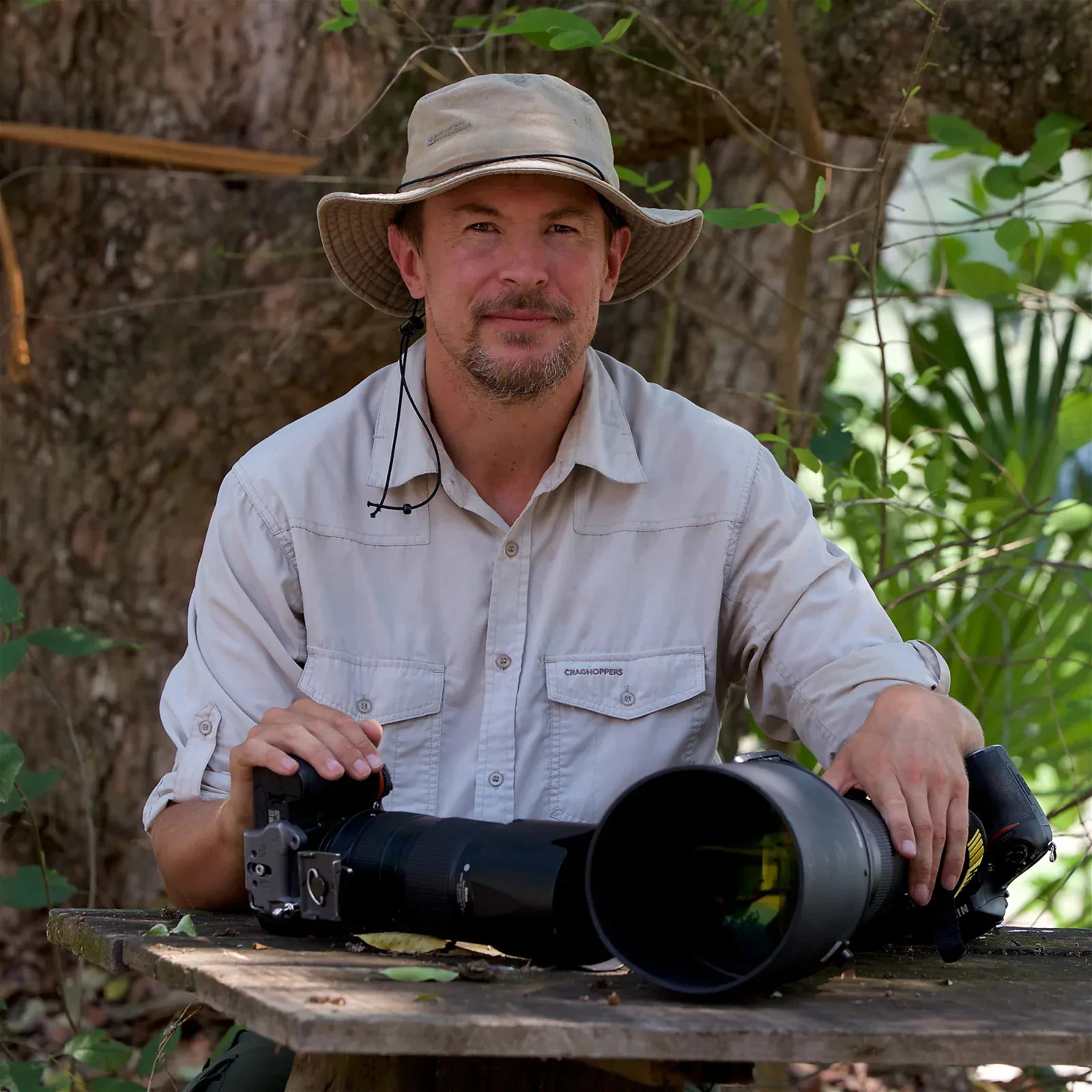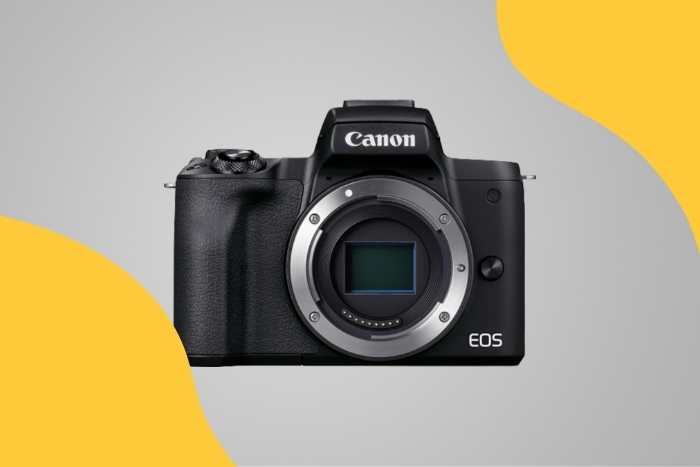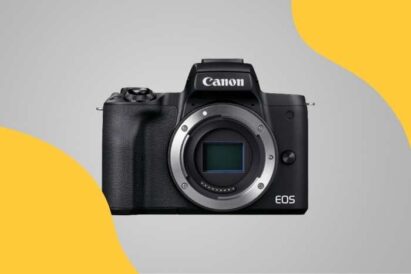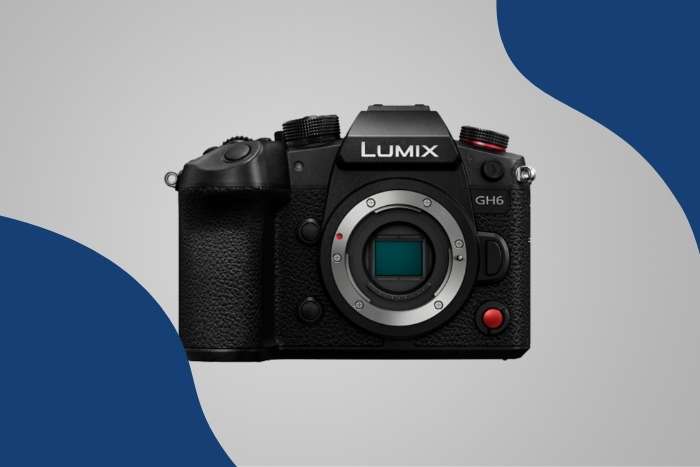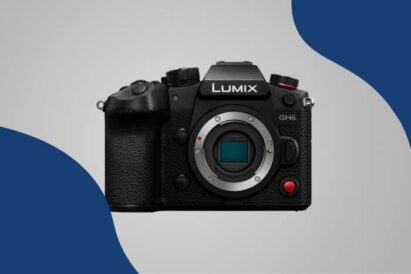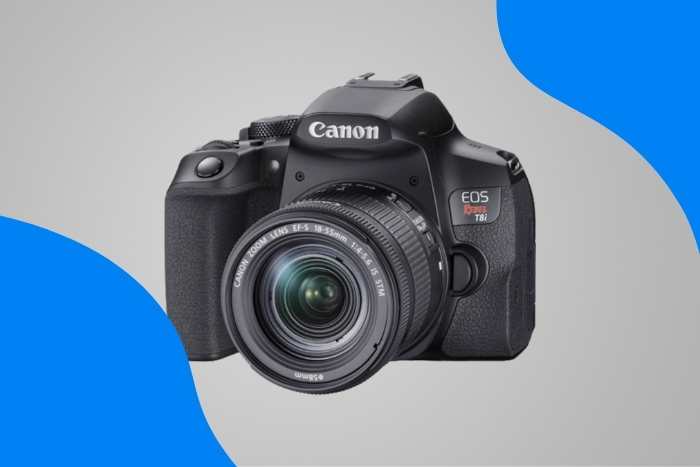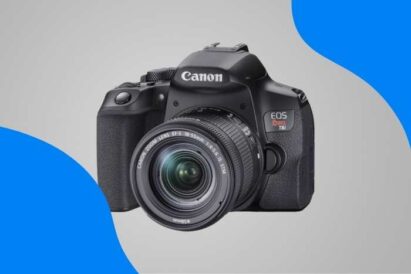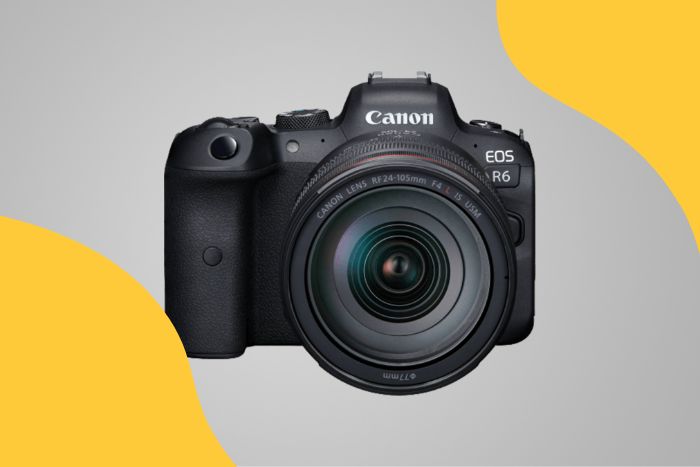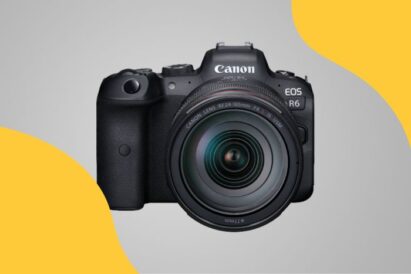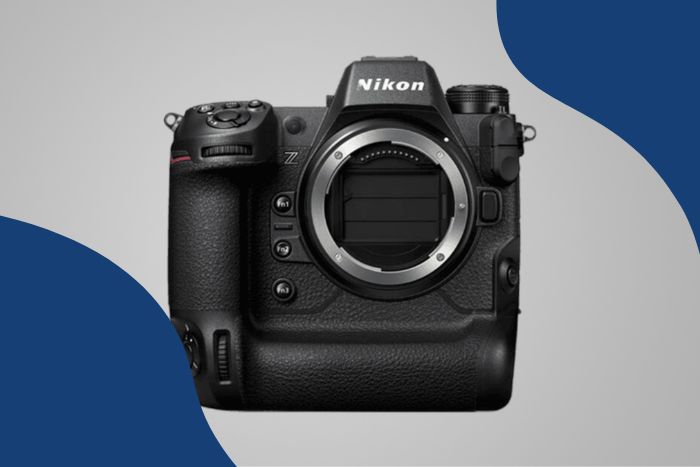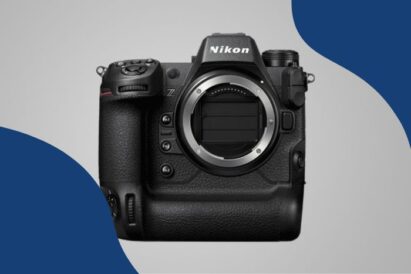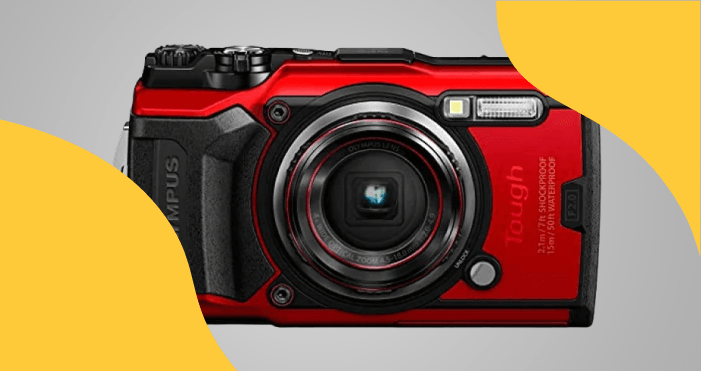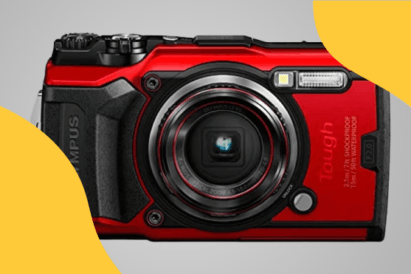Sony has always had a good reputation for audiovisual products. They sell high-quality TVs, video recorders, DVD players, and cameras. So if you’re looking for the best Sony camera for video, you’ve come to the right place!
This article lists the strengths and weaknesses of Sony’s main offerings on various budgets. Whether you’re looking for a high-end, expensive powerhouse like the Sony a1 or a compact like the ZV-1, we’ve got you covered.
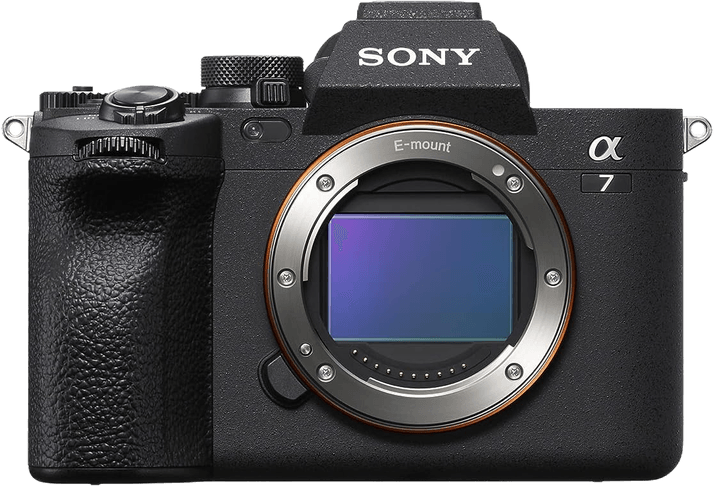
Sony a7 IV
The a1 is probably too expensive for anyone but a professional photographer or a serious enthusiast, so the a7 IV is our recommended model. However, a lot depends on your budget, what you will use it for, and whether you really need 8K or not.
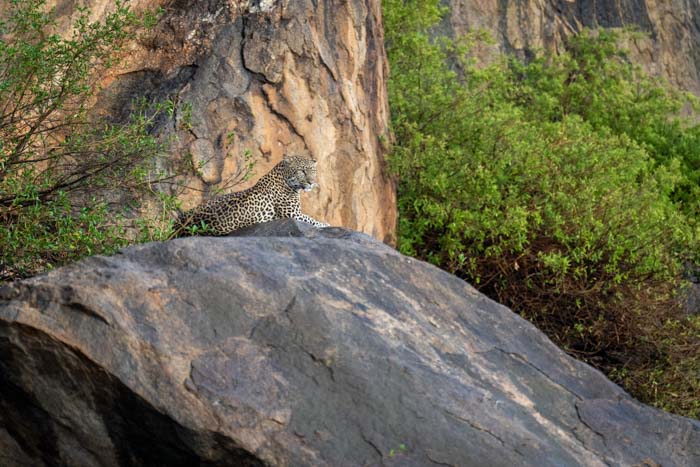
What is the Best Sony Camera for Video?
Let’s take a quick look at the main contenders before we delve into each model in more detail.

- Powerful video capabilities (4K / 60p, 10-bit video) and live streaming
- Excellent image quality
- 5.5 stops of image stabilization
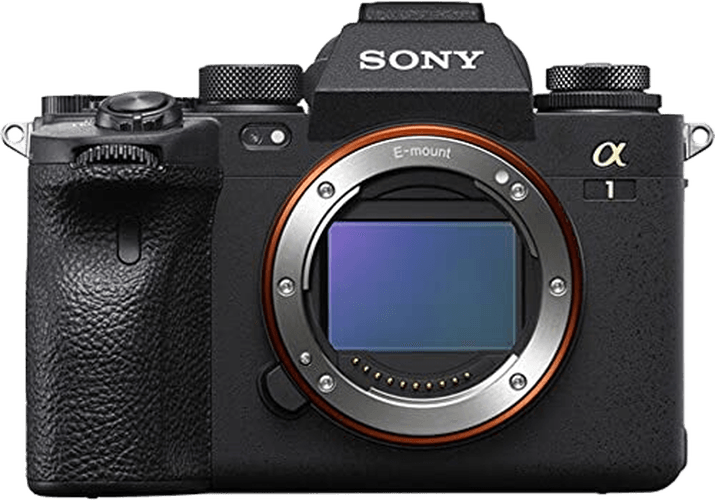
- Incredible 8K / 30p Ultra HD video
- Large sensor captures tons of detail
- High frame rate of 30 fps
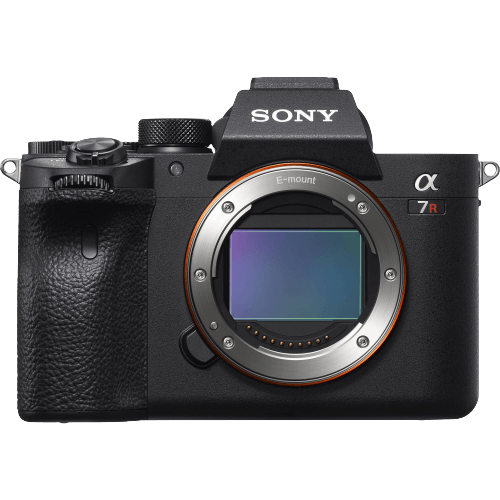
- High resolution 61 MP Full Frame sensor
- Microphone and headphone ports
- Dual memory card slots
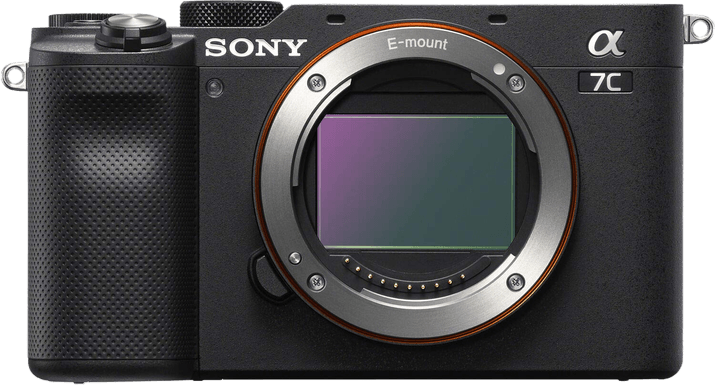
- Lightweight full frame body
- Excellent autofocus system
- Good battery life
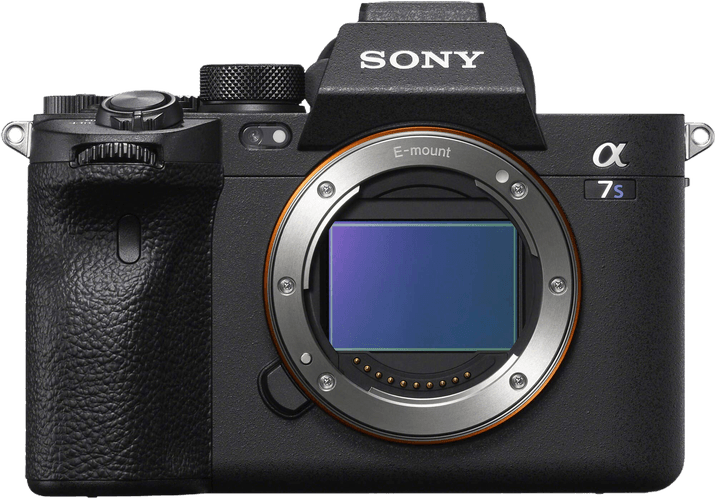
- Microphone and headphone ports
- Excellent ISO range
- Fantastic AF system
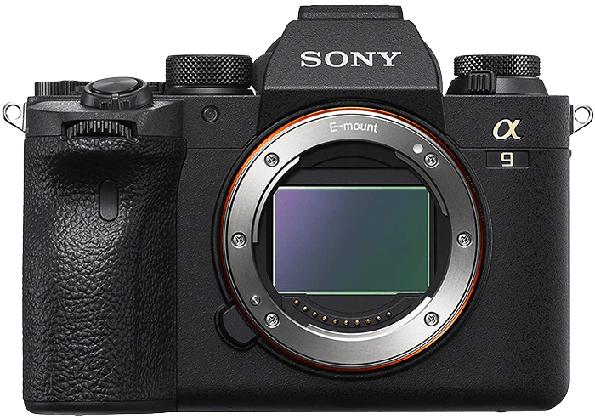
- Impressive 20 fps continuous shooting
- Lightning-fast autofocus
- Great file transferring speeds
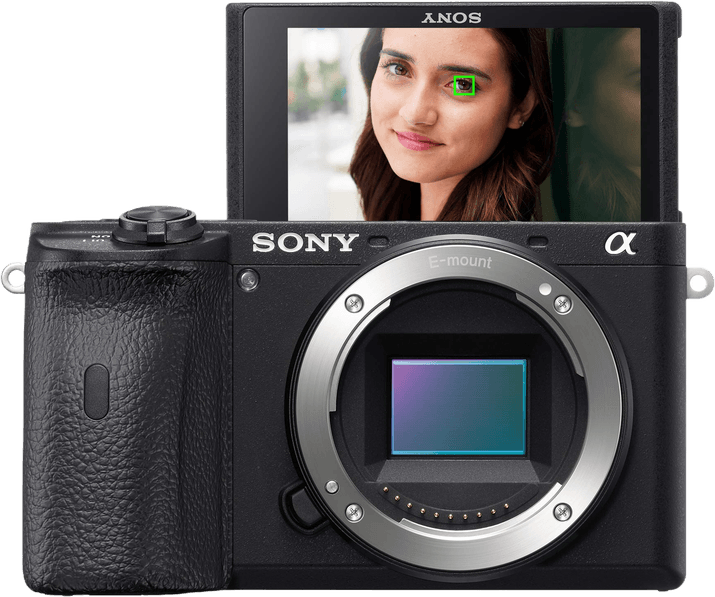
- Astonishing autofocus
- 5-axis in-body image stabilization reduces camera shake
- Silent shooting
- Terrific battery life
- Small, lightweight camera
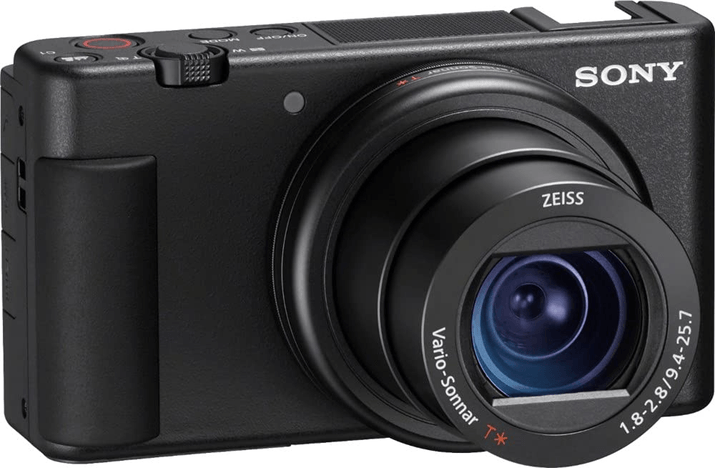
- Compact body
- Excellent eye-recognition AF
- Rotating screen and viewfinder
- Has a forward directional mic
- Additional external mic port
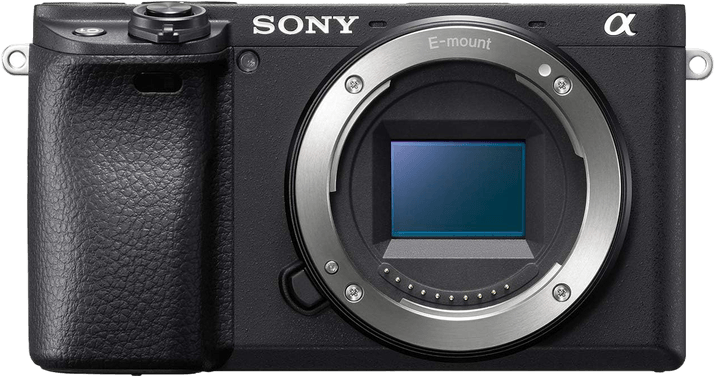
- Superb image quality for APS-C
- Good low-light performance
- Compact camera body
- No time limit for recording video
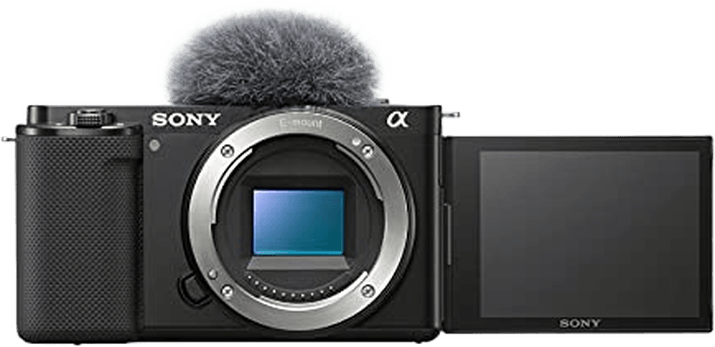
- Top-end autofocus system that's great with photo and video
- No time limit on video recording
- Fully articulating screen and selfie modes
10 Best Sony Cameras for Video in Detail
Now let’s examine each camera in detail.
1. Sony a7 IV

| Camera Type |
Camera Type
|
| Megapixels |
Megapixels
33 MP |
| Sensor Format |
Sensor Format
|
| Sensor Size |
Sensor Size
23.8 x 35.6 mm
|
| Frame Rate |
Frame Rate
10 fps |
| Autofocus Points |
Autofocus Points
759 |
- Excellent image quality
- Super responsive autofocus
- 5.5 stops of image stabilization
- Fully articulating rear screen
- Powerful video capabilities (4K / 60p, 10-bit video) and live streaming
- More expensive than the Sony a7 III
- 6 fps with 14-bit lossless compressed or uncompressed RAW files
- Significant distortion with moving subjects using a silent shutter
- Occasional issues with rolling shutter
- Requires a fast memory card
The Sony a7 IV is an excellent full frame mirrorless camera that offers oversampled 4K 60p video and the S-Cinetone color profile. It has real time Eye AF, SteadyShot image stabilization, good resolution, a fast frame rate, and many custom options.
The Sony a7 III was a great video camera, but the a7 IV adds higher resolution and a few more features for a much higher price. These include Gyroscopic Stabilization, unlimited recording, Lens Breathing Correction, and an Anti-dust Shutter. You also get a sharper LCD and viewfinder, a full-size HDMI port, and CFexpress Type A card support. All this makes it a better option than competing bodies such as the Canon R6.
The a7 IV provides 10-bit 4K footage, which means greater flexibility in post-processing Log footage and full HLG capture for HDR TV sets. The new 60p option is good for capturing fast action or slowing down the movement to show at 24, 25, or 30p. However, this is taken from the Super35/APS-C area of the sensor, which means you may get more noise.
You don’t get waveforms to optimize exposure, but there are some other useful video features on the a7 IV:
Breathing Compensation means the framing doesn’t change as the camera focuses. However, it does involve cropping and rescaling the footage and it only works with a few of Sony’s high-end G and G Master lenses.
Focus Map gives a color-coded view of how much depth of field you’re getting with the current aperture.
Video Stabilization comes in two modes—Standard and Active. Standard uses the stabilization mode of the lens or the camera’s IBIS system. Active adds digital stabilization. Unfortunately, Active stabilization leads to a slight crop and doesn’t cope very well if you move around. The camera records gyro sensor readings so you can use Sony’s Catalyst software for correction in post. However, this is a time-consuming process.
2. Sony a1

| Camera Type |
Camera Type
|
| Megapixels |
Megapixels
50.1 MP |
| Sensor Format |
Sensor Format
|
| Sensor Size |
Sensor Size
24 x 35.9 mm
|
| Frame Rate |
Frame Rate
30 fps |
| Autofocus Points |
Autofocus Points
759 |
- Large sensor captures tons of detail
- High frame rate of 30 fps
- Eye tracking (human, animal, and bird)
- Easy customization
- Silent shooting for quiet situations
- Incredible 8K/30p Ultra HD video
- Expensive
- Highest frame rates only for JPEG, HEIF, and lossy compressed RAW files
- Eye tracking only selected manually
- Small rear LCD screen
- No GPS
The Sony a1 is just about the complete full frame mirrorless camera—if you can afford it. The resolution, burst rate, world-beating AF system, and 8K video means it won’t take no for an answer!
The a1 is only the second hybrid camera to offer 8K video. It can record 10-bit output to either SD or CFexpress Type A memory cards without overheating. It can shoot an hour at 8K/24p or 30 minutes at 4K/120p (the same as two hours of playback). It can then do the same again after spending only 15 minutes cooling down.
Given the limitations of most displays, you might question the need for 8K resolution. However, it’s useful to get greater detail and better color rendition when downsampling to 4K. You also get the ability to pan and crop in post. This lets you give the impression of having shot footage with more than one camera—ideal for run-and-gun footage.
The camera’s AF tracking system works well while shooting video. You can either tap-to-track or rely on Real-Time face and eye detection for human subjects. In addition, SteadyShot Active digital and mechanical stabilization produces much smoother handheld footage. It doesn’t have any impact on sharpness, but it does mean a 1.1x crop.
The a1 has virtually the same video specs as the a7S III. However, the extra resolution means it can capture full-width 8K video at 24 and 30p, as well as 10-bit 4:2:0 H.265 footage at 200 or 400 Mbps. If you want slow motion, you can shoot at 4K/120p and slow it down, but that comes with a 1.13x crop.
Rolling shutter is not a problem due to the rapid readout speeds of the sensor. These range from 15.2 ms (for 8K/30p) to just 4.6 ms (for 1080/60p).
The only issue with 4K is that it’s pixel-binned. That means it merges adjacent pixels and loses detail in comparison to downsampled 8K footage (which is not available). The only way to get more detail is to shoot in APS-C/Super 35 mode. That’ll give you 4K footage oversampled from a 5.8K region of the sensor. However, it will have a bit more noise.
The other problem is with the ergonomics. The touch screen is quite small, has a low resolution, and is not fully articulated. That means the a1 is not great for selfies or vlogs.
3. Sony a7R IVA

| Camera Type |
Camera Type
|
| Megapixels |
Megapixels
61 MP |
| Sensor Format |
Sensor Format
|
| Sensor Size |
Sensor Size
35.7 x 23.8 mm
|
| Frame Rate |
Frame Rate
10 fps |
| Autofocus Points |
Autofocus Points
567 |
- 61 MP sensor produces Incredible image quality
- Advanced autofocus system with fast and accurate subject tracking
- Built-in 5-axis image stabilization ensures sharper images
- 15-stop dynamic range gives fantastic details in all conditions
- 40 fps 4K video footage is supported by real-time Eye Detection AF
- Only 7 fps burst rate with uncompressed RAW shooting
- Buffer times can be slow, especially with RAW shooting
- Pixel Shift mode can fail if shots include movement
- No built-in flash
- LCD screen is limited with only tilt-motion and no rotation
The Sony a7R IVA is just an updated version of the Sony Alpha a7R IV with a higher-resolution LCD. The R stands for Resolution, and you get 61 megapixels, plus uncropped 4K video. Other features include IBIS, a decent burst rate, and face and eye detection.
It can shoot 4K video, either using the full width of the sensor with pixel binning or using Super35/APS-C with a 1.58x crop at 24p or a 1.84x crop at 30p. The footage is only 8-bit (either internally or over HDMI). However, you can choose between the noise benefit of full-frame footage and the extra detail (but narrower field of view) from cropped modes. The Mark IV is also less susceptible to aliasing than the Mark III.
If you drop down to 1080p, the situation is reversed. Full-frame footage is more detailed and less prone to aliasing than Super35. You can also choose 1080/120p for slow-motion clips at the expense of a slight drop in image quality.
Tracking works well, and you get plenty of video tools such as zebras, Log profiles, and focus peaking. There are also several ports, including headphone and microphone jacks, a flash sync port, micro HDMI, and USB-C and micro USB connectors. The Micro USB socket also works as a Multi accessory port.
4. Sony a7C

| Camera Type |
Camera Type
|
| Megapixels |
Megapixels
24.2 MP |
| Sensor Format |
Sensor Format
|
| Sensor Size |
Sensor Size
23.8 x 35.6 mm
|
| Frame Rate |
Frame Rate
10 fps |
| Autofocus Points |
Autofocus Points
693 |
- Tiny, portable full frame body
- Excellent autofocus system
- Good battery life
- Weatherproof magnesium alloy body
- Option of bundling a lightweight 28-60 mm zoom lens kit
- Only two customizable buttons
- Small electronic viewfinder
- No touchscreen menus
- Only has one memory card slot
The Sony a7C is one of the smallest full frame mirrorless cameras on the market. The silver top and rangefinder-style eyepiece give it a different look from other Sony cameras. It has uncropped 4K video with SteadyShot image stabilization, a 15-stop dynamic range, and an excellent hybrid AF system.
It shoots detailed, oversampled 4K video at 24p and 30p. There are various Log modes, including S-Log and HLG. Touch tracking works well, with options to decide how “sticky” the autofocus should be and how quickly it should refocus.
However, there are a few problems:
- Capture is only 8-bit, which reduces your color grading options.
- There is a rolling shutter problem that leads to skewed verticals—especially at 24p.
- 30p footage has a slight crop.
- 1080p footage is soft and susceptible to aliasing.
There are mic and headphone ports, and you get a few tools such as focus peaking and zebra stripes. You can also customize your Fn options in movie mode. However, most settings, such as white balance and shutter speed, are copied from stills. That means it can take a while to dial in the optimal settings for video.
If you buy the bundle that includes the 28-60 mm f/4-5.6 kit lens, you limit the field of view and the maximum aperture. That impacts low-light performance and depth of field.
5. Sony a7S III

| Camera Type |
Camera Type
|
| Megapixels |
Megapixels
12.1 MP |
| Sensor Format |
Sensor Format
|
| Sensor Size |
Sensor Size
23.8 x 35.6 mm
|
| Frame Rate |
Frame Rate
10 fps |
| Autofocus Points |
Autofocus Points
759 |
- Unbelievable low-light performance
- Excellent ISO range
- Fantastic AF system
- Impressive high-resolution EVF
- Microphone and headphone ports
- Pricey
- Low 12.2 MP resolution for photos
- Poor battery performance
- No 8K video
The Sony a7S III is a slim and compact full frame mirrorless camera. It offers 4K video (with full pixel readout), IBIS, and excellent autofocus. It also has an HDMI connection, a wide ISO range, picture profiles, and great low-light performance (the S stands for Sensitivity).
You get unlimited 4K UHD at up to 120p in 10-bit 4:2:2 encoding and 16-bit RAW capture at up to 60p. Vloggers will like the fully articulating touch screen and 5-axis IBIS with SteadyShot. You can also benefit from using high-speed CFexpress Type A cards.
The fast readout speeds of 7-8 ms and low-resolution sensor mean rolling shutter is not a problem. However, the readout is not quite fast enough to allow 120p footage without a slight crop.
You have to tap the rear screen to start tracking your subject, but the autofocus system works well enough. It will also use face and eye detection if you’ve selected those options. However, it’s always worth using touch tracking as face and eye detection on their own might fail if the subject looks away.
If you want to output RAW over HDMI, you have to use the 12-bit ProRes RAW format with an Atomos external recorder. (The options for S-Log3/SGamut3 and S-Log3/CineGamut3 just change the metadata to let programs such as Final Cut Pro how to render the footage.) You end up with 4.2K (4264 x 2408) resolution, but it may appear softer and noisier than you expect.
It doesn’t apply the sharpening and noise reduction to compressed footage saved internally. The idea is that you can do all that yourself in post, but that obviously takes time and effort. Even then, you still can’t use some of Final Cut Pro’s video tools. Those include the white balance options and the ISO pull-down menu for adjusting brightness.
6. Sony a9 II

| Camera Type |
Camera Type
|
| Megapixels |
Megapixels
24.2 MP |
| Sensor Format |
Sensor Format
|
| Sensor Size |
Sensor Size
23.8 x 35.6 mm
|
| Frame Rate |
Frame Rate
20 fps |
| Autofocus Points |
Autofocus Points
693 |
- Impressive 20 fps continuous shooting
- Lightning-fast autofocus
- Improved ergonomics
- Great file transferring speeds
- 5-axis in-body image stabilization to counter camera shake
- No in-camera RAW image processing
- Confusing menus
- Battery performance isn't great
- No S-Log video
- Subpar video quality compared to new full-frame cameras
The Sony a9 II is a full frame mirrorless camera with a compact design. It offers 4K video, advanced subject recognition and tracking, a fast frame rate, and a 3″ tilting touch screen. It also has an Ethernet port, high-speed 2.4 or 5 GHz Wi-Fi, and the option of secure FTP transfer.
The a9 II has the same video specs as the original a9. You can shoot 4K/24p using the full width of the sensor or 4K/30p with a 1.2x crop. The 30p footage suffers less from rolling shutter. If you drop down to 1080p, you can shoot at 120p for slow-motion clips.
The a9 is a good video camera. In fact, Sony trumpeted the fact that it offered “the highest 4K movie image quality of any full frame interchangeable lens camera.” It’s also true that the IBIS system and compact form factor make it handy for run-and-gun filmmaking. The tilting screen also lets you shoot from the hip, and it doesn’t get in the way of any cables sticking out of the in/out ports. However, the a9 could’ve been a whole lot better if Sony had added picture profiles and Log capture tools for flexible post-processing. I don’t know why they didn’t.
The a9 II would also have benefited from a full-size HDMI connector, but at least it’s compatible with Sony’s XLR adapter for the Multi interface shoe. This has two inputs and has various controls for your audio settings, but it costs around $600!
7. Sony a6600

| Camera Type |
Camera Type
|
| Megapixels |
Megapixels
24.2 MP |
| Sensor Format |
Sensor Format
|
| Sensor Size |
Sensor Size
15.6 x 23.5 mm
|
| Frame Rate |
Frame Rate
11 fps |
| Autofocus Points |
Autofocus Points
425 |
- Astonishing autofocus
- 5-axis in-body image stabilization reduces camera shake
- Silent shooting
- Terrific battery life
- Small, lightweight camera
- Slow buffer speeds
- Controls feel cramped with large hands
- Limited touchscreen controls
- No pop-up flash
- Rolling shutter recording video
The Sony a6600 is the rangefinder-style flagship APS-C model in the a6x00 range. It offers 4K video with image stabilization and Real-Time AF, a fast burst rate, and a long-life battery.
You can shoot 4K oversampled video that shows excellent detail. However, you get noticeable rolling shutter effect at 24p and 25p, and 1080p footage is disappointing. The camera provides several Picture Profiles, including various Log options. However, the output is only 8-bit, if you were thinking about color grading.
Most video modes use the full width of the sensor, but 4K/30p uses a 1.23x crop, and 120p and 100p in Full HD have a 1.14x crop. Cropping means you need a shorter focal length to get wide-angle footage. And you get more noise since you’re not using the whole sensor. However, there’s not as much data to be written to the memory card, so the faster readout speed leads to less rolling shutter.
The AF tracking is good, but like in other Sony models, you need to dive into the menus to set up Touch Tracking. Tapping the screen may cause camera shake, and you can’t do it while you’re looking through the viewfinder. The exposure settings also carry over from stills shooting, so you need to change them every time or set up a custom preset.
However, it does have a selfie-friendly touch screen, lightweight body, good autofocus, and headphone/mic ports. Those features make it great for vlogging.
8. Sony ZV-1

| Camera Type |
Camera Type
|
| Megapixels |
Megapixels
20 MP |
| Sensor Format |
Sensor Format
|
| Sensor Size |
Sensor Size
13.2 x 8.8 mm
|
| Frame Rate |
Frame Rate
24 fps |
| Autofocus Points |
Autofocus Points
315 |
- Compact body
- Excellent eye-recognition AF
- Rotating screen and viewfinder
- Has a forward directional mic
- Additional external mic port
- Poor image stabilization
- Disappointing battery life with video
- Fixed lens is not a wide-angle
- Not all Mac operating systems support webcam software
The Sony ZV-1 is an affordable, compact camera that can record 4K HDR videos (without overheating) and offers livestreaming. It has great image stabilization, fast hybrid AF, and plenty of pro features for post-processing video.
Video output is only 8-bit, but it can manage 4K video up to 30p, Full HD footage up to 120p—or even 960 fps in high-speed mode (although at a lower resolution). The footage is sharp and smooth with minimal rolling shutter. You get SteadyShot image stabilization and wind noise reduction as well as common tools such as zebra stripes and focus peaking.
It’s aimed at the vlogging market. That means it has a fully articulating touch screen plus a zoom rocker and shutter release that can be operated while holding it at arm’s length. The controls are customizable. That makes it easy to switch between exposure, image quality, and other settings for stills and video. It also has a directional three-capsule microphone with a deadcat wind screen, which means you shouldn’t need an external mic. If you buy the optional Bluetooth handgrip, it has controls for video recording and shutter release plus a custom function button. It also doubles as a tripod.
You also get a few handy features specifically for video:
- Product Showcase gives you a smooth focus shift away from your face to a product by prioritizing nearby objects rather than faces.
- Background Defocus is just a way of opening up the aperture all the way by pressing the C1 function button. It’s intended for beginners, but the danger is that the resulting higher shutter speed will lead to choppy footage.
- Soft Skin Effect smoothes out wrinkles in your skin in stills and video. It’s available in low, mid, or high, but the high setting looks a bit unnatural, so it should be avoided.
If you’re not a vlogger, the lack of an EVF might bother you—especially when shooting in bright sunlight. There’s also no headphone socket, so you won’t be able to monitor pre-set audio levels.
9. Sony a6400

| Camera Type |
Camera Type
|
| Megapixels |
Megapixels
24.2 MP |
| Sensor Format |
Sensor Format
|
| Sensor Size |
Sensor Size
15.6 x 23.5 mm
|
| Frame Rate |
Frame Rate
11 fps |
| Autofocus Points |
Autofocus Points
425 |
- Superb image quality for APS-C
- Good low-light performance
- Compact camera body
- No time limit for recording video
- No in-camera RAW image editing
- No in-body image stabilization
- Screen tilts but no further articulation
- Complicated menu system
The Sony a6400 is a compact APS-C mirrorless camera that claims to have the fastest autofocus system in the world. It offers 4K video (with both slow and quick motion options), Real-time Eye AF, object tracking, time-lapse photography, and a fast frame rate.
If you can’t afford the a6600, the Sony a6400 is a pretty good second best. It has the same APS-C sensor, the same tap-to-track autofocus, and the same selfie-friendly touch screen—although you can’t use it with a mic on the hot shoe. It can shoot unlimited, detailed, oversampled 4K footage with no crop at 24p or 25p and a 1.2x crop at 30p. You also get several dedicated video tools. These include focus peaking, focus punch-in, audio meters, an electronic level, zebra stripes, and flat Log profiles.
However, it has the same problems as the a6600:
- It doesn’t “remember” exposure and other settings for stills and video.
- Touch tracking is not ideal.
- It suffers from severe rolling shutter when shooting 4K at 24p or 25p.
- 1080p footage is disappointing.
- Video output is only 8-bit.
In addition, there’s no headphone socket or image stabilization.
10. Sony ZV-E10

| Camera Type |
Camera Type
|
| Megapixels |
Megapixels
24 MP |
| Sensor Format |
Sensor Format
|
| Sensor Size |
Sensor Size
23.5 x 15.6 mm
|
| Frame Rate |
Frame Rate
11 fps |
| Autofocus Points |
Autofocus Points
425 |
- Top-end autofocus system that's great with photo and video
- No time limit on video recording
- Fully articulating screen and selfie modes
- External microphones and headphones ports
- Compact and lightweight camera body
- No sensor-shift stabilization, only a shake reduction system
- Visible rolling shutter effect with tracking shots
- The lack of a viewfinder is disappointing
- 4K video is cropped at 30 fps
The Sony ZV-E10 is a compact APS-C mirrorless camera designed for vlogging with an optional handgrip. It also features Product Showcase, Background Defocus, and Soft Skin Effect. It offers uncropped 4K 24p video with a fully articulating touch screen, a three-capsule microphone, and headphone/mic ports. It can also livestream video using the USB-C connection.
The ZV-E10 provides oversampled 4K video at 24p and 30p. The 24p footage is uncropped, but there’s a noticeable 1.23x crop at 30p. It also offers 10 of Sony’s Cinema Picture Profiles, which let you shoot a low-contrast version you can color-grade in post. You also get S-Log 2 and 3 and HLG capture, but the 8-bit footage won’t be as good as what you’d get with a 10-bit camera.
If you want slow-motion footage, you can drop it down to 1080/120p. This lets you have a 4x slow-motion effect with a 1.14x crop.
The audio quality with the built-in microphone is good. However, the Multi interface shoe lets you attach one of Sony’s wide range of wireless and shotgun microphones. If you want to use a third-party product, you can always use the 3.5 mm input.
You don’t get IBIS, but you can use electronic shake reduction or optical IS with Sony’s OSS-equipped lenses. You can choose between Active and Standard stabilization, which gives you a combination of digital and optical IS. However, the Active mode comes with a heavy, 1.44x crop.
Our Verdict
There’s a Sony camera on this list for almost anyone wanting to shoot video—whatever their circumstances. If you want the absolute best money can buy, there’s nothing better than the Sony a1. However, it comes with a hefty price tag!
If you want a slightly cheaper full frame mirrorless camera, the a7 IV is probably the best option. However, there are several other models that might fit the bill.

Sony a7 IV
Alternatively, if you’re a vlogger or you like to travel, the a6600 or the ZV-1 might be right up your street.
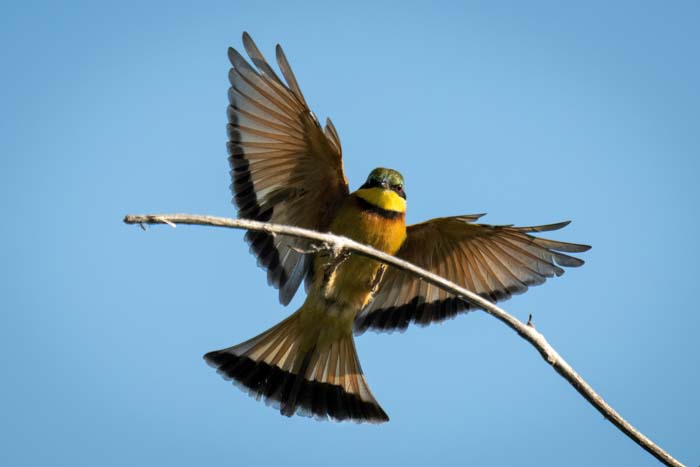
Common Best Sony Camera for Video FAQs
Which camera brand is best for videography?
The three most important camera manufacturers are Nikon, Canon, and Sony. Nikon and Canon traditionally had the DSLR market sewn up. However, Sony came along with various mirrorless offerings and revolutionized camera production. Sony cameras now offer a great combination of 4K+ video and market-leading autofocus systems.
Are Sony cameras good for filmmaking?
Mirrorless cameras are generally better than DSLRs for videography, and Sony has been making them for longer than most. That experience and the extensive range of lenses make Sony cameras a good buy for would-be vloggers and videographers.
Which Sony camera is best for wedding videography?
It depends on the brief. Some couples may want the absolute highest quality, which is 8K. In that case, you’ll have to splash out on a Sony a1. However, if they prefer a candid, intimate feel with more handheld footage, you might prefer a lighter, more portable model such as the a6600 or ZV-1. They’ll still give you 4K footage, but without the backache!
What Sony camera do vloggers use?
The most important criterion in choosing a camera for vlogging is having a fully articulating touch screen. It makes life so much easier when you can actually see what you’re recording. Yes, you could always buy an external monitor, attach it to the hot shoe, and turn it 180°. However, that would add another few hundred dollars to the price and make the camera a lot heavier and more unwieldy. It’s much simpler to choose a model such as the a7S III, ZV-1, or ZV-E10.
Is the Sony a7 good for videography?
Yes, the a7 IV is our top recommendation and offers 4K video with Real-Time Eye AF, SteadyShot image stabilization, and many custom options. The a7S III is great for vlogging, travel, and low-light conditions. It’s also aimed specifically at videographers. That means you get 4K video (with full pixel readout), IBIS, excellent autofocus, HDMI connectivity, and many picture profiles.
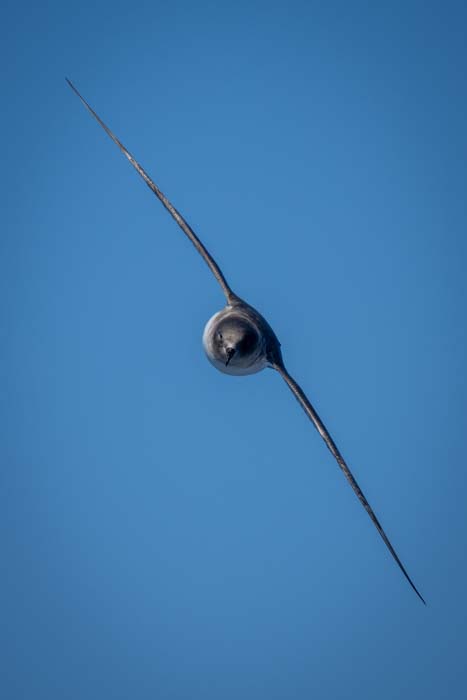
We have great new articles comparing Sony vs Canon mirrorless or Sony vs Nikon mirrorless cameras to explore next!

